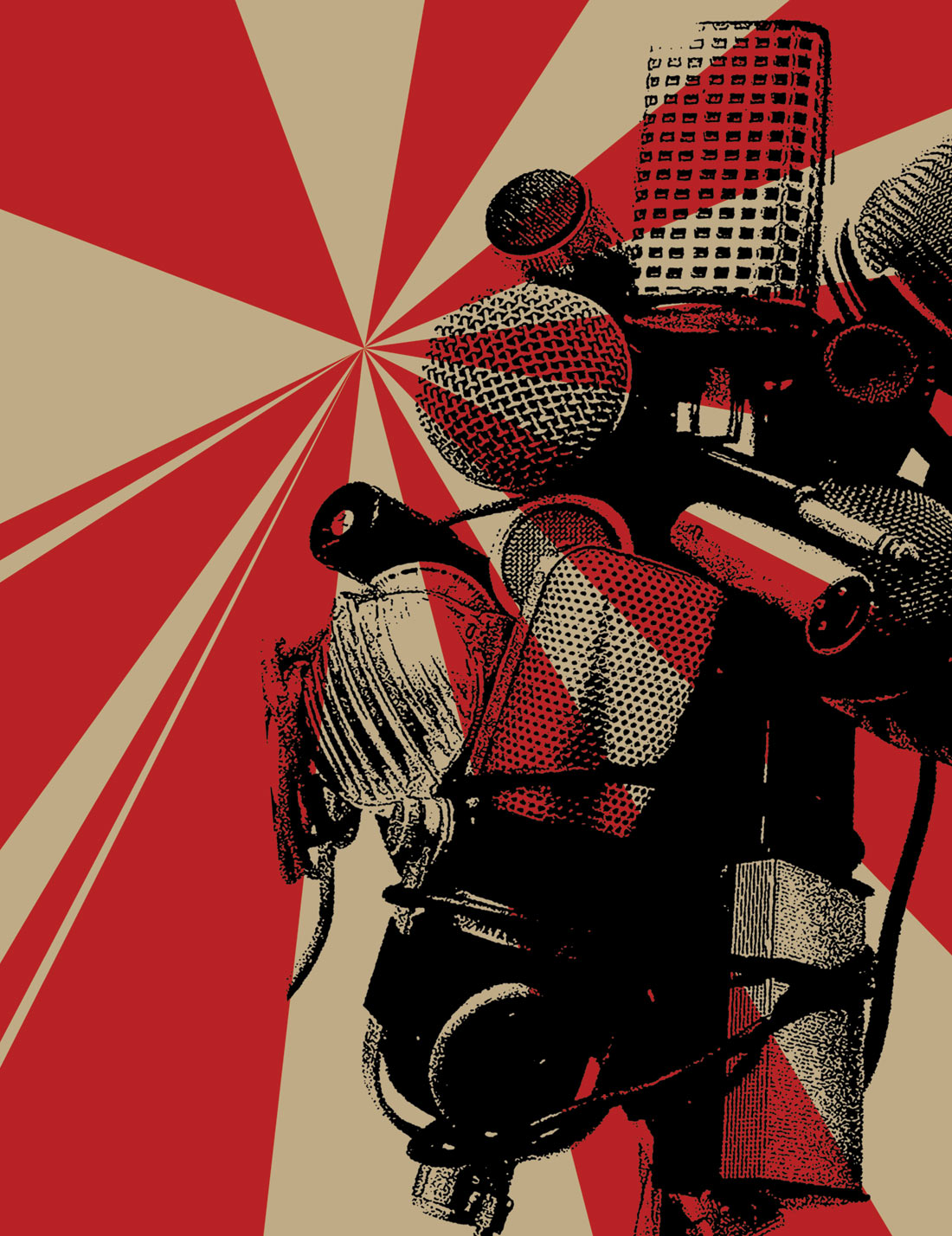Along with other acoustic treatments, I've employed RealTraps bass traps (Tape Op #36, #38, #48) in my personal studio with a good deal of success. The payoff for careful placement of traps, treatment, main monitors, and a Bag End subwoofer (#50) was a monitoring setup that measured very close to flat from 20 Hz to 20 kHz at mix position. The most difficult challenge was mitigating the destructive effect of standing waves in a region between 60-72 Hz. Due to the geometry of the room, the untreated room had a 15 dB hole in this region at mix position, and at other locations in the room, as would be expected, there were significant dips or peaks. Why? Because as sound reflects back and forth between room surfaces, at frequencies with wavelengths that are related to the geometry of the room, the direct and reflected sounds create standing waves. The result is that certain locations of the room will have nulls with very low sound pressure at geometrically-related frequencies (room modes) while other locations will have intensified sound pressure. In fact, most small to medium-sized rooms exhibit poor behavior at low frequencies, where the wavelengths are low fractions of the room dimensions. There's also a time domain concern due to the room resonating at the problem frequencies. In other words, you might hear some frequencies ring out far longer than they should, while other frequencies decay more quickly. While some amount of reverb is a good thing, undamped low-frequency reverb usually equates to a muddy, blurred sound; and uneven decay continues to highlight the room modes even if the frequency response measures flat. That's where bass traps come in; they absorb the bass along room boundaries and therefore abate the destructive effect of bass reflecting back into the
room. Successful bass trapping not only reduces boominess, but it can also increase bass where it had been nullified, and it normalizes the decay time across all frequencies.
Traditional bass trapping techniques involve false walls made of absorbent material many feet deep, large volumes of resonant chambers, and/or vast surfaces of membrane absorbers. Unfortunately, most project studios today have neither the space nor the construction budget (not to mention the approval of the property owner) for effective, integrated bass trapping. Within the project studio market, the RealTraps company has led the way with its line of portable, passive bass traps incorporating both absorbent material and resonant membranes. Unfortunately, even 21 RealTraps of various models weren't capable of fully taming the problem modal frequencies in my control room, and I ended up with a carefully-positioned subwoofer to fill what remained of the 60-72 Hz hole after all the traps were hung. But there's a big caveat here; adding the subwoofer took care of the problem as measured in frequency domain, but it didn't help much with the time domain trouble. In other words, even though the RealTraps moderated much of the bass resonance, there was still some unwanted ringing, especially at 63 Hz and 40 Hz, which the subwoofer actually magnified as it excited these room modes further. (I used Acoustisoft RPlusD software to create three-dimensional waterfall plots of my room measured at various locations. A waterfall plot shows impulse response across frequency as it decays over time, highlighting ringing as "ridges" that extend out from the rest of the slope.) Some would argue that a parametric EQ would fix things here; but in reality, an EQ can only boost or cut in frequency domain, with only a secondary effect (due to amplitude adjustment) in time domain. In other words, the ringing would still be there if EQ'ed, only altered in amplitude. The real solution would be to add bass trapping
aimed specifically at the ringing. Instead of tuned passive traps, I decided to try Bag End's new active E-Trap.
The E-Trap resembles a small subwoofer. It employs a 10" driver along with two mics, feedback circuitry, and an amplifier. In effect, it creates "reverse" sound pressure to reduce resonances. The rear panel has the necessary knobs and switches to configure the E-Trap to simultaneously damp two offending frequencies (in the range 20-65 Hz). Thoughtfully, Bag End uses knobs that you can push in flush to prevent accidental turning. All of the switches are flush too. Unfortunately, the AC power cord attaches via a Neutrik PowerCon cable that's anything but flush, preventing you from placing the E-Trap right up against a wall. The unit sports a top-mounted fold-out handle for easy portage and placement.
I used a signal generator to output 40 and 63 Hz out of my monitors and crawled along the floor until I found where these two frequencies resonated the most-the front-right corner of the room. After positioning the E-Trap there, I followed the tuning instructions in the succinct manual. The ultimate effect was significant enough that not only was the ringing audibly reduced (confirmed by waterfall plots, even before adjustment of subwoofer level), but I had to turn down my subwoofer a few dB because the destructive cancellation at mix position was also allayed. The final outcome was a substantial increase in low-frequency clarity that could be heard throughout the room.
Used in conjunction with passive trapping and acoustic treatment, Bag End's E-Trap is an incredible tool for reducing targeted low-frequency resonances, especially if you have space limitations. By the way, you can also use an E-Trap to damp resonances in a tracking room, even resonances born from acoustic instruments. ($1598 MSRP; www.bagend.com)
Tape Op is a bi-monthly magazine devoted to the art of record making.




_disp_horizontal_bw.jpg)